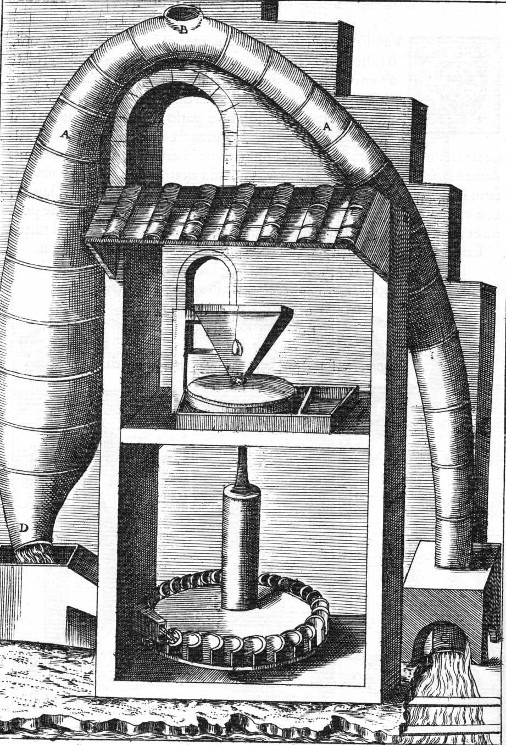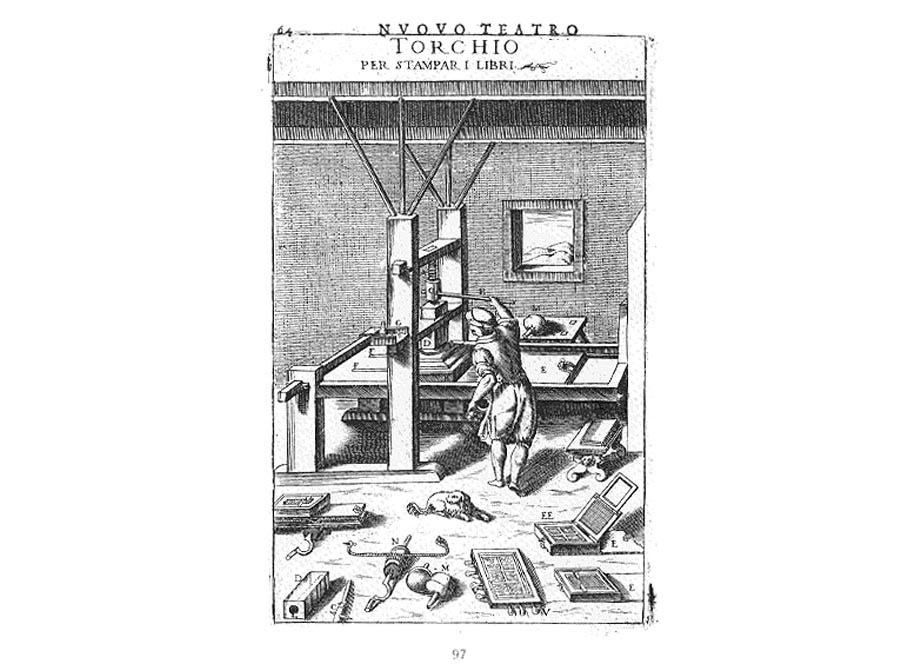|
This book is another example of the renaissance theaters of machines that fascinated the educated classes of Europe. As with Bockler and others, Zonca was hopeful about the prospects for perpetual motion and included some speculative designs in his book. The perpetual water mill shown here raises water from the reservoir on the right through the inverted tube, where it exits on the left at a higher level to drive the mill before returning to the reservoir. Zonca had one of two physical phenomena in mind for this scheme: either it was an impossible variation on a siphon, or a massively scaled up version of a capillary tube. In the first case Zonca would have had a mistaken idea of how siphons work, while the second possible concept would work on a very small scale, but not on the practical scale depicted in the figure.
|



